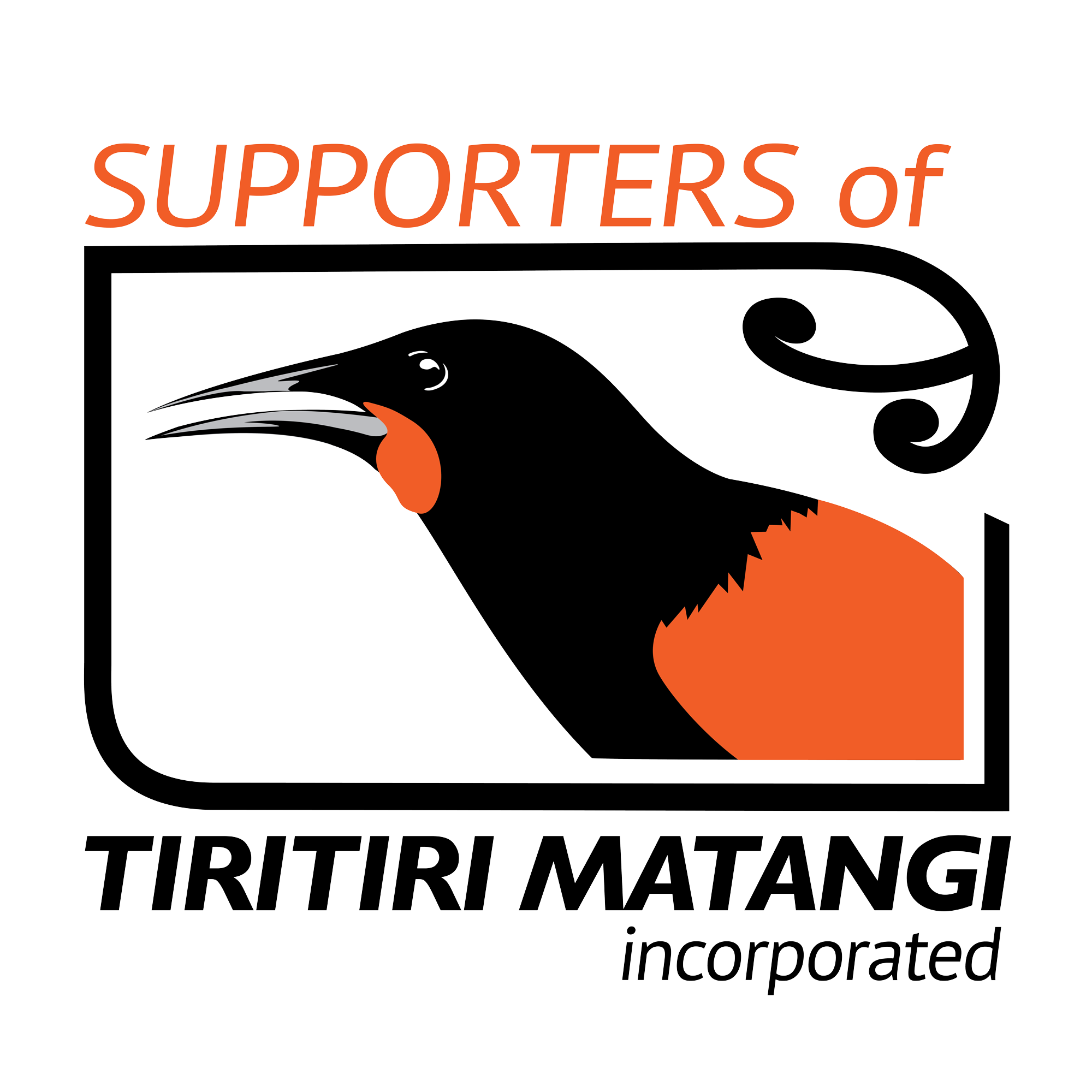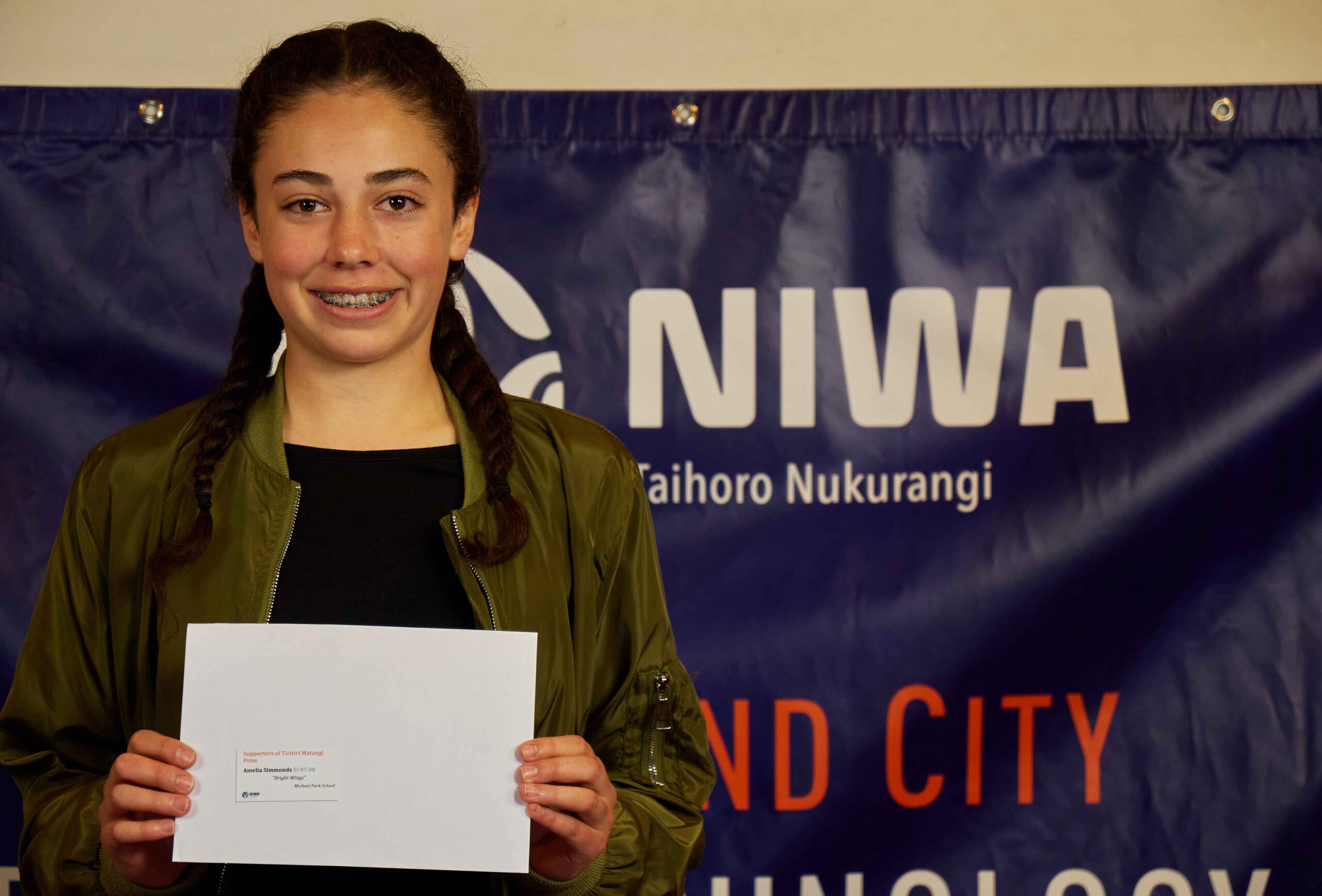Pōpokatea
Pōpokatea
Despite their size, these birds have a good set of lungs on them and can be found in noisy flocks flitting through the canopy. In the North Island the pōpokatea/ whitehead is the main host to the koekoeā/long-tailed cuckoo who lays its eggs in their nest. Once hatched, the young koekoeā then evicts the host’s eggs and chicks and is raised alone. The pōpokatea continues to feed the koekoeā as if it was their own, even though it is much larger than themselves!
Miromiro
Miromiro
Over a dozen birds have been translocated onto Tiri – though only one has decided to hightail it back home – the miromiro or tomtit. After their translocation to the island in 2004, it appeared that they had disappeared. Soon afterwards, these midget birds were found to have winged it all the way to the Hunua ranges – 60 kilometres away. Things have changed now though, and there are regular sightings of a resident miromiro or two.
Mātātā
Mātātā (Fernbird)
More like a mouse than a bird, visitors are more likely to hear the ‘call and response’ tick/tack between pairs than see a mātātā/fernbird. These small sparrow-like birds are fitted with a long tail measuring half their size which means they typically only fly short distances. The Tiritiri population were originally rescued from the path of the Northern Motorway. Using recordings of their call, conservationists managed to lure a small population from this threatened piece of land and helicoptered them to their new island home. Those 13 birds have now formed a robust population.
Kōtare
Kōtare
As you walk from the wharf towards Hobb’s beach you may notice the banks are dotted with holes. Look closer and you’ll find you’re looking at a kōtare/kingfisher housing estate. To create these burrows, kōtare repeatedly fly headlong into the bank piercing the mud with their dagger-like bill! Once a purchase point has been created they will continue to dig with their beak forming an upward-sloping tunnel, and then a chamber in which they will nest. Although the name kingfisher suggests a diet consisting mainly of fish, these birds will eat almost anything, including skinks, crabs, small birds and even mice.
Korimako
Korimako
If you’ve ever experienced the amazing dawn chorus, you’ll know how the korimako or bellbird got its English name! The early naturalist Joseph Banks who circumnavigated Aotearoa with Captain Cook was awoken to their song and scribbled this description in his journal. “They… made, perhaps, the most melodious wild music I have ever heard almost imitating small bells but with the most tunable silver imaginable…”. A small population of these songbirds survived in the unfarmed valleys of the island, though thanks to planting efforts in the late 1980s and the installation of the sugar-water feeders their numbers have greatly increased. Thanks to these efforts, korimako are now breeding across the strait in Manly and Shakespear Regional Park!
Day visitors to Tiritiri Matangi are likely to see all but one of the translocated species of bird present on the Island. The one they almost certainly won’t see is the little spotted kiwi because, like all Kiwi, they are nocturnal. For those fortunate enough to spend the night on the Island, a night walk can be a most rewarding experience. As the Kiwi population grows and the birds become increasingly tolerant of human presence, the chance of an encounter has gone from being a possibility to a probability.
Five pairs of little spotted kiwi were released on Tiri in 1993, followed by six more birds two years later. A 1997 census showed the birds were breeding well with a population of around 25. This included the largest ever little spotted kiwi recorded at the time, a female weighing almost 2kg (this has since been surpassed on Tiri).
Endemic to New Zealand, there are also four other distinct species of kiwi. By far the most common are the brown kiwi (in the North Island) and tokoeka (on Stewart Island). The others are the rowi, which is by far the rarest kiwi species, and the great spotted kiwi. The little spotted is the smallest species of kiwi. The only certain populations are on offshore islands, with most of these on Kapiti Island.
Despite being our national symbol, the kiwi is rarely seen outside of captivity. It is a tragedy that, without outside help they are expected to all but disappear from the mainland within fifty years. The reason for this is predation. Although adults can generally fend off attacks from all but dogs, other predators, particularly stoats, wreak havoc on nests and juvenile populations. Juveniles leave their parents very early and it is believed that only 1-5% survive their first year. There is some hope however, thanks to ‘Operation Nest Egg’, a programme whereby eggs and juvenile kiwi are removed from the wild and raised in captivity. They are then released into their original habitat when large enough to fend for themselves.
On Tiritiri Matangi, there is a census of little spotted kiwi every five years. In July 2012, 32 individual birds were caught and a further three were seen. Four of the captured birds were from the original translocation in 1993. The estimated total population for the Island is 80-100 birds, a 38% increase on the 60-70 estimated in 2007. During the 2012 survey, five males were found incubating eggs. These are the earliest nests ever recorded for little spotted kiwi, two months earlier than expected.
Kākāriki
Kākāriki
Kākāriki were the first bird to be introduced to Tiritiri Matangi. In January 1974, 10 years before planting started, kākāriki from Cuvier island were released on the island. Their success prompted scientists to investigate the island as a place to do research . These long-time residents still have a thriving population, despite many new arrivals. Kākāriki are particularly chatty, and their rapid, loud chatter can often be heard overhead as they often vocalise whilst flying.
2020 Conservation Awards Winners
2020 SoTM Conservation Winners
Dylan Lewis Y7 from Mahurangi College, Warkworth, being presented with the 2020 Supporters of Tiritiri Inc & Fullers 360 Science Conservation Primary Schools Award by acting principal Christina Merrick and Board of Trustees member Dr Ihirangi Heke at the end of year December 2020 Y7 Assembly.
Dylan was nominated by his Year 7 Homeroom teacher, Mrs Anne Taylor at Mahurangi College. She describes him as an inspiration to others with his thoughtful and pragmatic approach to protecting our environment.
After a visit to his school from Forest and Bird, Dylan decided to support his community by trapping rats, mustelads and possums in his local area. He began trapping at home in 2018 and then, after discussing with his neighbours, he began trapping in his local neighbourhood from October 2019. He has also volunteered in 2020 to be a part of the trapping team working in the Mahurangi College Bush restoration project.
Dylan initiated trapping to save the dotterel population at Snells Beach and shared his story with the class and in his previous school of Warkworth Primary School.
He has been featured in the SOSSI News (Sandspit SOS).
He has assisted Michelle Mackenzie with dotterel protection in Snells Beach.
Dylan volunteered to assist with the trapping team in the working in the Mahurangi College Bush restoration project.
Dylan traps for his local community, his school community and he assists in local conservation projects when he is able. E.g. helping to protect the dotterals.
The NIWA Auckland City Science and Technology Fair winner of the Supporters of Tiritiri Inc and Fullers 360 Science Conservation 2020 Award is Amelia Simmonds Y8 from Michael Park School Ellerslie.
Her project was on butterflies titled Bright Wings. The NIWA Science and Technology Ak Fair had to be judged online this year during August when in lockdown. The students presented their projects in pdf and were interviewed over Zoom by two to three judges. It was a Science and Technology Fair with a difference. The final prize giving in September was able to be in person with an audience at Kings School Hall in Remuera.
Welcome Swallows
Warou (Welcome Swallows)
Welcome swallows are small fast-flying birds found in open country particularly around lakes, coasts, riverbeds and ponds. Their flight is circular and darting in style, and they may be seen singly, in pairs or in flocks. Flocks often perch en masse, lined up on fences or power lines. They were named ‘welcome swallows’ because they appeared in southern Australia as a herald of spring. Due to their elegant shape and flight, and their preference for nesting around buildings, swallows are noticed and appreciated more than most other small birds.
Welcome swallows breed on Tiritiri Matangi and are often seen hawking for insects over the open grassy areas, and over the ponds.
Spotless Crake
Puweto (Spotless Crake)
The spotless crake is a cryptic bird of freshwater wetlands throughout the North Island. It is a small, dark coloured rail (about half the size of a Eurasian blackbird) that is very secretive and infrequently seen. Their furtive nature and good dispersal ability mean that they could be present in areas of suitable habitat far from known populations.
On Tiritiri Matangi numbers of spotless crake vary, probably depending on the conditions. They are often heard and sometimes seen around the edges of the ponds, but can occur almost anywhere in the bush areas.
Silvereye
Tauhou (Silvereye)
The silvereye colonised New Zealand from Australia in the 1850s, and is now one of New Zealand’s most abundant and widespread bird species. It is found throughout New Zealand and its offshore and outlying islands, occurring in most vegetated habitats, including suburban gardens, farmland, orchards, woodlands and forests. Silvereyes are small songbirds that are easily recognised by their conspicuous white eye-ring; their plumage is mainly olive-green above and cream below. It is an active, mobile species that moves about frequently, including making sea crossings.
On Tiritiri Matangi they are fairly scarce during the breeding season but move around the Island in flocks during the winter.

